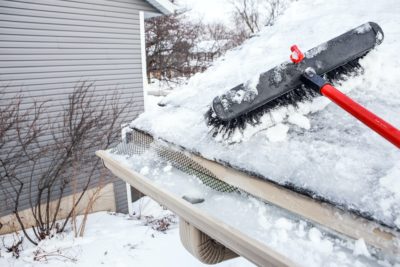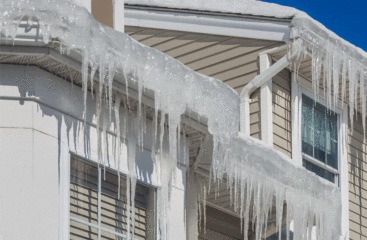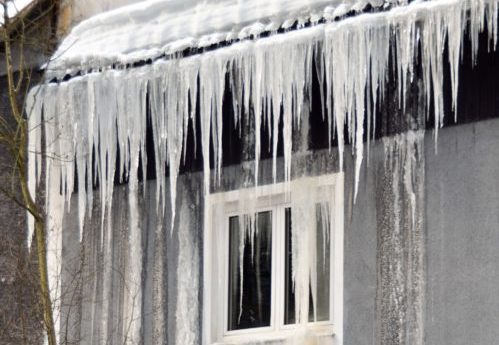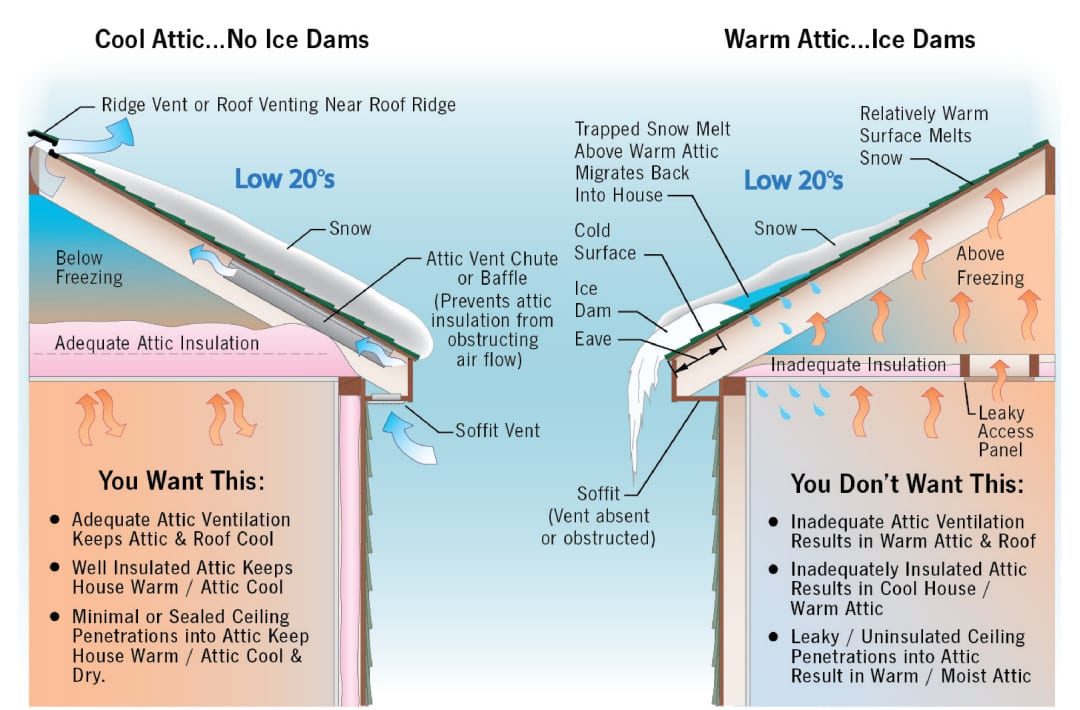Ice Dams
Ice dams are destructive to homes, causing damage to roofs, walls, and ceilings. However, they are easily preventable with proper insulation and ventilation in the attic.
Ice dams: destructive, yet preventable
Ice dams are ridges of ice at the gutter and edges of your roof. They form when too much heat rises up from your living space and escapes into the attic. Unsealed and uninsulated heating ducts also contribute heat.
The heat warms the underside of your roof deck and causes snow to melt. As a result, the melted snow runs down the roof and freezes at the lower roof (eaves), which is not as warm as the deck.
The melted snow penetrates the roof assembly and moves down into your walls.




Frequently Asked Questions about Ice Dams
Ice dam preventive measures may not come cheap, but the fix for the aftermath might just cost you more. Ice dams wreak havoc on your roof, possibly requiring costly replacements of roof components, window trims, and sidings. These dams might also severely damage your walls and ceilings, leading to expensive repairs and even entire replacements.
Home Comfort Practice offers ice dam prevention services that range from $1,000 to $4,000. The actual cost depends on the size of your attic and how much work it needs.
It is preferable to begin with preventative measures such as air sealing, insulation and increased airflow ventilation. Roof heat cables do NOT prevent ice dams from forming, rather, they melt channels through the formed ice dams to minimize the amount of buildup and partially remove snow from the area. Proper prevention may make cables unnecessary.

